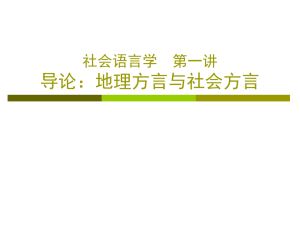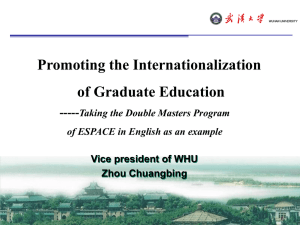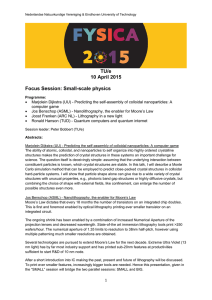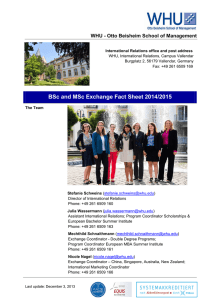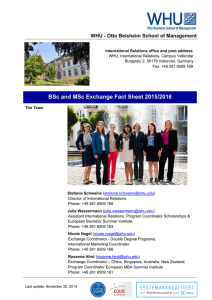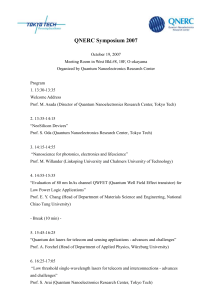Nanoelectronics - the GMU ECE Department
advertisement
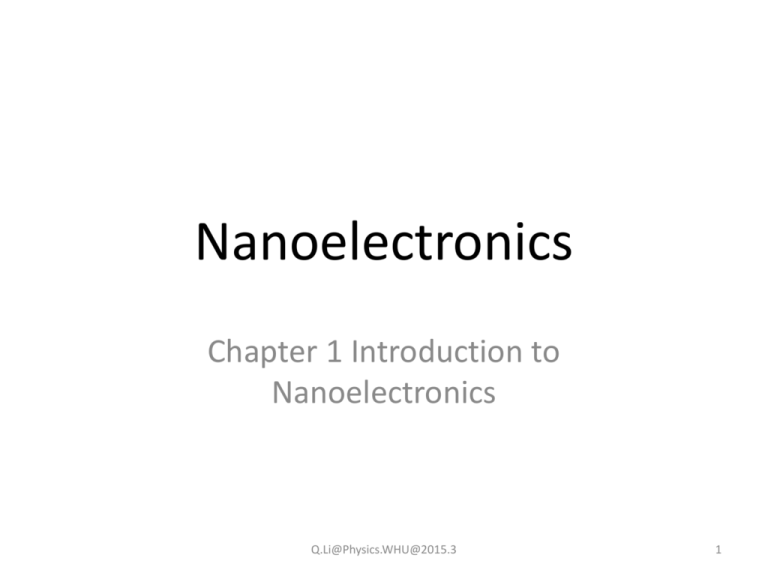
Nanoelectronics Chapter 1 Introduction to Nanoelectronics Q.Li@Physics.WHU@2015.3 1 • COURSE DESCRIPTION • This course focuses on the fundamental concepts and principles of nanoelectronic materials and devices. Nanoelectronics is concerned with electronic devices with one or more dimensions at nanoscale. The lecture will cover the electronic properties of solids including semiconductors in samples of physical dimension of ~100 nm or less, and the corresponding basic device building blocks such as quantum dot (QD), single electron transistor (SET), nanowire, carbon nanotube (CNT), graphene, etc. The course will consider the design, simulation and analysis of a variety of nanoscale devices ("quantum" or "mesoscopic" devices) and examine the most notable, novel applications. Q.Li@Physics.WHU@2015.3 2 Course Outline • • • • • • • • • • • • Course and Syllabus Overview Classical particles, classical waves, and quantum particles Quantum Mechanics of Electrons Confined Electrons / Electrons Subject to a Periodic Potential Tunnel Junctions and Applications of Tunneling Coulomb Blockade and the Single-Electron Transistor Carbon Nanotubes and Nanowire Transistors Many Electron Phenomena-Particle Statistics Models of Quantum Wells, Quantum Wires and Quantum Dots Nanowires, Ballistic Transport, and Spin Transport NanoCMOS / Silicon-on-Insulator (SOI) CMOS Fundamental Limits to Scaling Q.Li@Physics.WHU@2015.3 3 Depiction of a CNT FET Q.Li@Physics.WHU@2015.3 4 Q.Li@Physics.WHU@2015.3 5 1.1 The “Top-Down” Approach • Microelectronics Industry (from William Shockley to Chenming Hu) • Cost of manufacturing processes: a new integrated circuit manufacturing plant costs more than several billion US dollars Q.Li@Physics.WHU@2015.3 6 The First Transistor (BJT) (Bardeen, Shockley and Brattain @ 1948 in Brattain’s lab) Q.Li@Physics.WHU@2015.3 7 Story behind the First BJT Bardeen was a quantum physicist, Brattain a gifted experimenter in materials science, and Shockley, the leader of their team, was an expert in solidstate physics. 1947: W. Brattain and J. Bardeen (Bell Labs) experimentally demonstrated the device J. Pierce (Bell Labs) name the device: transfer + resistor = transistor 1949: W. Shockley theoretically described bipolar junction transistor 1956: Nobel Prize Q.Li@Physics.WHU@2015.3 8 Story behind the First BJT Walter H. Brattain was born on Feb. 10, 1902 in Xiamen, China, grew up in Washington state. He had double majors: physics and mathematics. He and his three classmates: known as “the four horsemen of physics”. He worked in National Bureau of Standards (later called NIST) from 1927 to 1929, then joined Bell Labs. Q.Li@Physics.WHU@2015.3 9 Story behind the First BJT John Bardeen was born in Madison, Wisconsin on May 23, 1908. He had a major in Electrical Engineering. He joined Shockley’s group of solid state physics. The group met almost daily to discuss field effect and surface states. Bardeen was the only person to have won the Nobel Prize in physics twice. (also, BCS theory in 1972) Q.Li@Physics.WHU@2015.3 10 Story behind the First BJT William B. Shockley was born in London, England. His Ph.D. thesis was Electronic Bands in Sodium Chloride (NaCl). Shockley tried to commercialize a new transistor design from 1950s to 1960s, leading to California’s “silicon valley” located in San Jose. Shockley Semiconductor Laboratory built the basis of modern electronics: transistors and circuits. The “traitorous eight” are eight men who left Shockley Semiconductor Laboratory in 1957. Q.Li@Physics.WHU@2015.3 11 Story behind the First BJT From left to right: Gordon Moore, C. Sheldon Roberts, Eugene Kleiner, Robert Noyce, Victor Grinich, Julius Blank, Jean Hoerni and Jay Last. (1960) They found “Fairchild Semiconductor”. Q.Li@Physics.WHU@2015.3 12 Fin field effect transistors Prof. Chenming Hu (FinFET, courtesy from Intel) Q.Li@Physics.WHU@2015.3 13 1.1.1 Lithography Q.Li@Physics.WHU@2015.3 14 1.1.1 Lithography • Resolution of an optical lithography process 𝜆 𝑅 = 𝑘1 𝑁𝐴 K1 is a constant. λ is the wavelength of the source. NA is called the numerical aperture (0.5-0.9). • Immersion lithography 𝜆 𝑅 = 𝑘1 (𝑁𝐴)𝑛 • Extreme ultraviolet (EUV) and X-ray lithography • Electron Beam Lithography (EBL) • (in research) Negative index of refraction materials Q.Li@Physics.WHU@2015.3 15 1.2 The “Bottom-Up” Approach • Richard Feynman in a speech, “There’s Plenty of Room at the Bottom.” • SEM, STM, TEM and AFM push the resolution limit to 0.1 nm. • In contrast to “top-down” approach, emphasis on atom-by-atom manipulation / movement • Include chemical, biological self-assembly, mechanical assembly of devices, electrophoretic / dielectrophoretic assembly. Q.Li@Physics.WHU@2015.3 16 1.3 Why Nanoelectronics • Benefits of smaller transistors: faster and higher integration density • Device fabrication: it is difficult to extend optical lithography into nanoelectronics • Device operation: must include the law of quantum physics • Heat dissipation: the biggest problem Q.Li@Physics.WHU@2015.3 17 1.4 Nanotechnology Potential • • • • • • • Nanoparticles Nanomaterials Nanoelectronics Nano-optics Nanomagnetics Nanofluidics Nanobioelectronics, including chemical/bioweapons detection Q.Li@Physics.WHU@2015.3 18 1.5 Main Points • • • • • • Understand the various size units History of microelectronics The limit of optical lithography What is called bottom-up approach Problems in downscaling current electronics General sense of nanotechnology-related products Q.Li@Physics.WHU@2015.3 19 1.6 Problems • The definition of “Quantum Dot”? • Briefly describe lithography techniques? • How to prepare yourself as a scientist or engineer? Q.Li@Physics.WHU@2015.3 20
